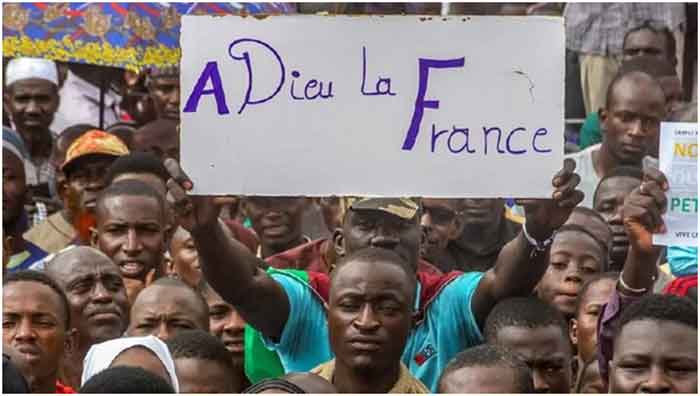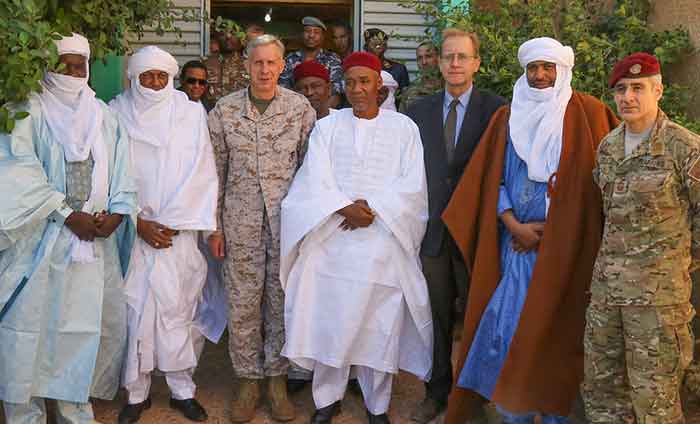
Sudan says River Nile water levels have dropped as a reservoir behind Ethiopia’s Grand Renaissance dam has filled up, hitting out at “any unilateral actions taken by any party.”
Egypt has also demanded “quick official clarification” from Ethiopia.
Sudan and Egypt are downstream, and fear the large dam will greatly reduce their access to water.
Ethiopia sees the hydroelectric project as crucial for its economic growth and improving electricity supplies.
“If Ethiopia doesn’t fill the dam, it means Ethiopia has agreed to demolish the dam,” Prime Minister Abiy Ahmed told parliament earlier this month.
Ethiopian state media EBC have backtracked after reports on Wednesday that suggested the dam was being filled deliberately, though without making it clear whether the dam’s gates had been closed.
On Thursday, Sudan’s foreign ministry quoted an Ethiopian official as saying Ethiopia was not filling the dam and had not closed its gates.
Earlier this week, talks between the three nations over the $4bn Grand Ethiopian Renaissance Dam (GERD) ended without agreement, Ethiopian officials said, blaming “unchanged and additional and excessive demands of Egypt”.
Dialogue and a fair solution were needed, Sudan’s information minister Faisal Saleh was quoted as saying on Monday.
Sudan said it had measured a noticeable decline in the flow of water at the al-Deim water station, which borders Ethiopia.
Years of fraught negotiations have failed to reach a consensus on how and when to fill the reservoir, and how much water it should release.
Egyptian foreign minister Sameh Shoukry has previously warned that filling and operating the dam without an agreement “that protects the downstream communities… would heighten tensions and could provoke crises and conflicts that further destabilize an already troubled region”.
A conflict between Egypt and Ethiopia, which are both U.S. allies, would put millions of civilians at risk.
On Wednesday Ethiopia’s water minister Seleshi Bekele appeared to confirm the satellite images showing dam water levels rising, with state broadcaster EBC quoting him as saying it was “in line with the dam’s natural construction process”.
The EBC backtracked, saying it apologized for “erroneous” reporting that incorrectly quoted the water minister as saying the process of filling the dam had started.
“[Mr Bekele] said negotiations on the Gerd would continue in a manner that would ensure the interests of Ethiopia”, EBC clarified.
Satellite images taken between 27 June and 12 July show a steady increase in the amount of water being held back by the dam.
Two unnamed Ethiopian officials who spoke to AFP news agency have respectively blamed this on heavy rains outpacing the dam’s ability to push water downstream, and it being a normal part of construction that has not stopped flow altogether.
When fully operational, the dam will become the largest hydroelectric plant in Africa, providing power to some 65 million Ethiopians, who currently lack a regular electricity supply. However, Egypt gets almost all of its water from the Nile and fears the dam will reduce supplies.
Ethiopia says it will take between five to seven years to fill up the dam to its maximum flood season capacity of 74 billion cubic meters (bcm). At that point, the lake that will be created could stretch back some 250km (155 miles) upstream.
Between each subsequent flood season the reservoir will be lowered to 49.3bcm.
Egypt, which almost entirely relies on the Nile for its water needs, is concerned that in most years of the filling it is not guaranteed a specific volume of water.
Once the filling stage is over, Ethiopia is reluctant to be tied to a figure of how much water to release.
In years of normal or above average rainfall that should not be a problem, but Egypt is nervous about what might happen during prolonged drought.
Negotiations over the mega dam have failed to reach agreement after nearly a decade of talks between Egypt and Ethiopia, with Sudan caught in between.
Last year, Egypt sought the intervention of the U.S. on the impasse.
Egyptian President Abdel-Fattah al-Sisi requested that U.S. President Donald Trump mediate the conflict, which Ethiopia was initially reluctant to accept.
The U.S. and the World Bank got involved but failed to get Ethiopia to sign up to a document agreed with Egypt in February.
When the U.S. then said that the dam should not be completed without an agreement, Ethiopia accused the superpower of overstepping its role as a neutral observer.
The African Union (AU) has now said it will try to find a solution.
After a fortnight of failed talks, tensions are escalating with Sudan claiming the gates of the dam are shut
Egypt requested urgent clarification from Ethiopia on Wednesday night as confusion reigned over whether Addis Ababa had begun to fill its Nile dam reservoir days after latest talks ended with no resolution.
Sudan said water levels in the Blue Nile had declined by about 90 million cubic meters per day and said the dam’s gates were shut. The average water flows down the river’s main tributary on which the GERD is being built reaches 500 million cubic meters per day in August as it reaches Sudan.
Egypt made no further comment on the reports but the Foreign Ministry said it was seeking clarification.
Water behind the dam photographed by the European Space Agency’s Sentinel-1 satellite was probably a “natural backing-up of [rain] water behind the dam caused by rainy season conditions,” said William Davison, International Crisis Group’s expert on Ethiopia.
Ethiopia has long maintained it would start filling the dam in mid-July regardless of whether an agreement was reached with Egypt and Sudan. The months of July and August witness the peak of the Blue Nile’s annual flooding caused by the seasonal rain on the Ethiopian highlands.
“The construction of the dam and the filling of the water go hand in hand,” Ethiopia’s minister for water, Seleshi Bekele, told the Ethiopian Broadcasting Corporation. He also confirmed the satellite images of July 9. Media outlets also quoted him as saying the filling has begun.
However, the minister later told the AP that the images in fact reflected heavy rainfall. He did not explain the discrepancy in his comments.
Egypt, Ethiopia and Sudan on Monday wrapped up nearly two weeks of talks on the disputed dam without a breakthrough. That round, held virtually because of the coronavirus pandemic, was the latest in nearly a decade of protracted talks between the three nations over the dam, which, on completion, would be Africa’s largest hydroelectric dam. The talks were attended by representatives of the United States, the European Union and South Africa, in its capacity as AU chairman.
“Unchanged and additional and excessive demands of Egypt and Sudan prohibited the conclusion of this round of negotiations by an agreement,” Bekele said on Wednesday.
Egypt, which has long blamed Ethiopia for the lack of progress in the talks, fears the dam would significantly reduce its vital share of the river’s waters, costing the most populous Arab nation hundreds of thousands of jobs and disrupting its food security. Sudan is concerned a structural breach in the dam could flood large chunks of its territory and maintains that, without operational co-ordination, the GERD could close its own hydroelectric dams on the Blue Nile.
Ethiopia has sought to reassure Egypt and Sudan, saying the dam on the Blue Nile is key to the alleviation of its widespread poverty and is meant to benefit, not harm, the two downstream countries as well as other Nile basin countries.
But Egypt contends that Ethiopia is refusing to reach a legally binding deal and is rejecting proposals for a deal on the flow of the river during persistent drought or a mechanism for resolving future disputes.
Egypt’s share of the river’s water is said by President Abdel Fatah El Sisi to be an existential issue.
A statement on Monday by the Egyptian irrigation ministry said the three nations would separately send their assessment of the talks to South African President Cyril Ramaphosa, whose country is the current AU chairman. The South African leader would later call for a summit meeting of the three nations and others to decide what should be the next steps.
The amount of water Ethiopia said it intended to save behind the dam this and the next year is relatively insignificant, but Egypt and Sudan fear that filling the dam without an agreement in place would set a dangerous precedent since Addis Ababa intended to build more dams on the Blue Nile.
Egyptian officials have so far avoided any reference to military action to settle the dispute, but El Sisi has recently declared without mentioning the dispute directly that his military was prepared to carry out missions outside the country.
Pro-government social media influencers have, in the meantime, been urging the government to strike the dam before it is filled, a possibility that may have grown as the talks continue to fail to produce results.
Military action by Egypt, however, poses logistical and operational challenges to Cairo and would be difficult to justify to the international community as an act of self-defence.
The huge hydroelectric project on the Blue Nile, known as the Grand Renaissance dam, is at the centre of Ethiopia’s plan to become Africa’s biggest power exporter.
Ahmed Hafez, the spokesman for Egypt’s ministry of foreign affairs, said his country “requests urgent official clarification from the Ethiopian government”, on whether filling the dam had officially begun. “Egypt continues to follow developments raised by the media on this issue,” he added.
Egypt’s foreign minister, Sameh Shoukry, told the Alghad TV channel days earlier that any “significant harm” to Egypt’s water security by the dam constituted “a red line.” He said Egyptian authorities would react “firmly”, as “significant harm is illegitimate under international law”.
The dam blocks the river as it runs from Lake Tana in Ethiopia to meet the White Nile in Khartoum, before flowing north into Egypt. It will take several years to fill.
Sudan is less worried than Egypt, and hopes to gain access to cheap electricity that would provide a welcome boost for its troubled economy. Yasser Abbas, Sudan’s irrigation minister, said on 13 July that all parties were “keen to find a solution” but technical and legal disagreements persisted over the dam’s filling and operation.
Analysts say fears of any immediate water shortage “are not justified at this stage at all [but] if there were a drought over the next several years, that certainly could become a risk”.
Kevin Wheeler, a researcher at the Environmental Change Institute at Oxford University, said the escalating rhetoric was mostly because of changing “power dynamics” in the region.
SIGN UP FOR COUNTERCURRENTS DAILY NEWSLETTER















































